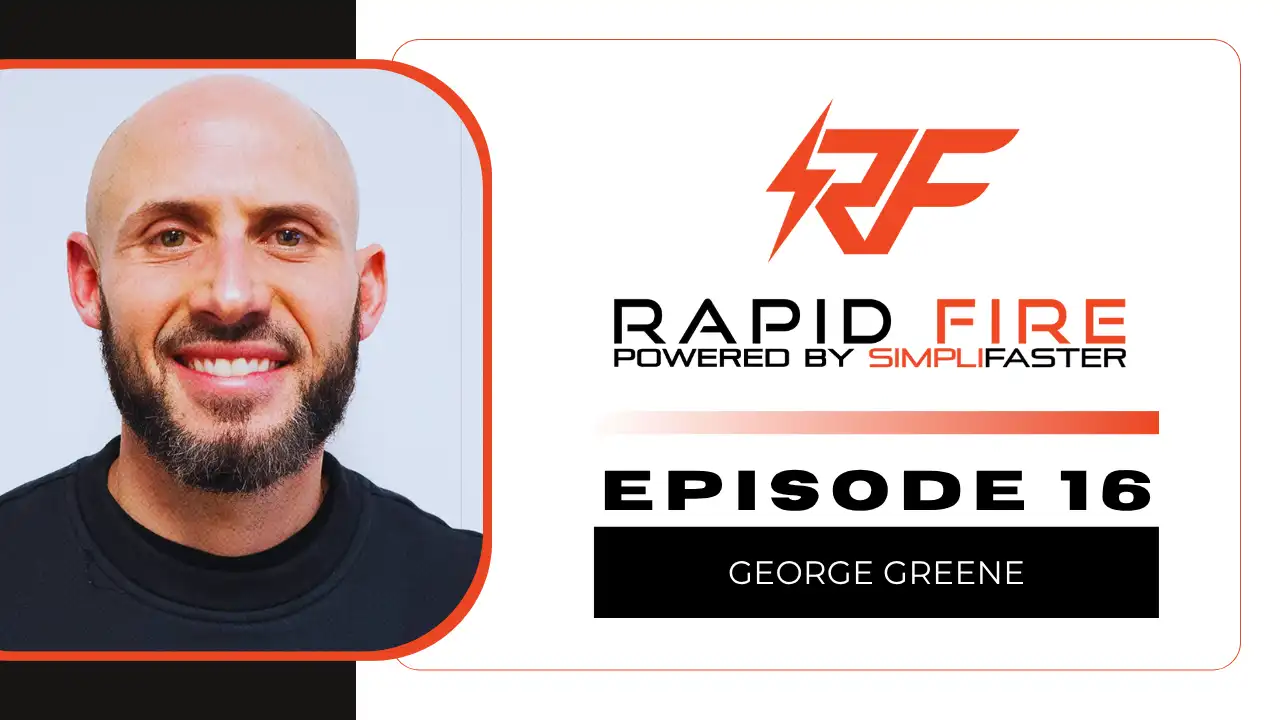[mashshare]

Conditioning is an important part of the sports performance and health of both athletes and the general population. Evaluating the ability to extract oxygen and utilize it during exercise is a measurement that is common and valuable in the applied setting, as well as the research space.
This buyer’s guide covers gas exchange analyzers in the market, including how they work and what the future is leading to. While we make no recommendations, the list of companies mentioned creates an awareness of the products currently available to coaches and sport scientists. There is a growing trend toward portability, and the technology is on the verge of becoming consumer-friendly.
Metabolic testing is more than just oxygen utilization; it’s important for the utilization of macronutrients for fuel as well. Therefore, this guide will also briefly mention systems that are able to determine metabolic rate and substrate extraction.
What Is Metabolic Gas Analysis Testing?
The primary reason to perform gas exchange analysis on an athlete is to get an accurate assessment of their ability to extract oxygen and use it for aerobic performance. In addition to oxygen extraction, systems can also determine how much carbon dioxide is exhaled. How oxygen and carbon dioxide are exchanged in the body potentially determines how an athlete can cope with fatigue, as well as what output they are able to compete with. An assessment of the changes in oxygen extraction and carbon dioxide transport out of the body assumes that arterial levels are parallel with changes in respiratory exchange, and while they are very similar, they are not the same in real time.
Gas exchange analysis gauges an athlete’s ability to extract oxygen and use it for aerobic function. Share on XThe common metrics used by gas analysis systems are:
- Maximal oxygen uptake (VO2 Max)
- Metabolic equivalents (METS)
- Minute ventilation (VE)
- Carbon dioxide production (VC02)
- Ventilatory equivalents measures (VE/VO2 and VE/VCO2)
- Respiratory gas exchange ratio (RER)
Straightforward health and wellness measures that are important but not directly related to performance are metabolic rate and efficiency type metrics. Nutritionists who are progressive and want to actually prescribe nutritional interventions based on metabolic profiles can use advanced systems to address individual measures. Aging populations, recreational athletes, and elite competitors can all benefit from testing at rest conditions. Macronutrient distribution and caloric intake prescription with periodized diets are growing in popularity, but without direct measures, many of the estimations are not accurate.
Most systems that test athletes use a treadmill to estimate aerobic performance, but nearly every analyzer works fine with stationary cycling, rowing, and any cyclical equipment. Each mode of graded exercise has pros and cons, meaning athlete data may not be transferable to the field if the mode of exercise has poor relevance to the sport.
Some advanced systems are suitable for swimming tests, but a flume water treadmill is costly for even high performance centers. Some systems are technically portable and provide a backpack-like solution for activities that are on the grass, but due to their size, still have issues replicating a perfect environment. Newer systems are promising, as they have no hoses or wearable devices, but they have yet to be thoroughly vetted by multiple peer review studies. Today, the typical lab cart and treadmill solution is the most commonly employed testing option for conditioning tests.
Who Should Use Metabolic Gas Analyzers?
Most of the users of metabolic gas analyzers are sport scientists, but coaches and nutritionists are appropriate as well. In hospitals, lab techs commonly run the equipment, with qualified professionals performing the analysis. Any professional who needs to know the metabolic data of an athlete at rest or during exercise can be educated and trained to utilize the technology. Generally, running tests with the equipment is straightforward and easy, with most of the demand on analysis of the data and knowing how to improve the findings.
Ideally, the information gets shared with the athlete, along with an explanation of what it means and a plan to either improve the data or support their score if maximized. While most users seek out maximal performance in endurance, team sport athletes can benefit by including other tests such as electrocardiograms and even lactate testing.
How Metabolic Gas Analyzers Work
Just as important as the technology behind the equipment, practitioners should know how protocols work scientifically. Due to the complex nature and extensive amount of context for best practice, the methodologies of testing, analyzing, and prescribing interventions are all necessary to apply testing data. Gas analyzers estimate the composition of oxygen and carbon dioxide with internal sensors and all have different technologies that make them prone to variances in accuracy and precision.
Nearly every system on the market uses a hose to directly connect the air exchanges from an athlete to the machine, but an ultra-portable option bypasses hoses and reads the gas directly. A face mask covers the mouth and usually has a dual shaped extender, with one valve that flows into the machine for readings. Because air contains moisture, filters exist to ensure the air is dry and clean for the readings, and to prevent health hazards to users later. Most machines need to be maintained and cleaned, but some have internal mechanisms that assist users and reduce maintenance requirements.
Drift, a common problem with sensors, occurs when the measurement quality decays over time. Calibration, whether manual or done internally by the machine, requires the user to literally rest the device so it measures accurately. A system must be carefully maintained to ensure precision, and various sensors are common in the equipment to detect possible interference from ambient air quality and other variables. Generally, it is an enormous challenge to keep a machine accurate over long periods of time, as practitioners need to have data that is comparable year to year. In addition to the reliability of the machine, practitioners care about the interchangeable qualities of the data between other machines and other professionals, so tight protocols are important.
After the sensors internally mix and calculate the composition of the gas, the final step is to display the information. Most of the digital readouts from the machine are not measurements, but general operational messages. Typically, the data is sent from the analyzer to the software on a laptop or tablet, wirelessly or via cable. Software, mainly available in Windows, enables users to generate reports and further analyze the data. Some systems provide a web app for cloud storage and mobile viewing.
Validation and Accuracy of Systems
The process of ensuring that metabolic gas analysis systems are valid, reliable, and precise is very demanding. Validation of gold standard products is also difficult, as even the best research products require repeated external review for comparison purposes. Coaches must understand that most laboratory testing is still an estimate, as graded exercise testing protocols are questioned and conflicting in the scientific literature. Therefore, each system needs to pass through a rigorous review in order to see the strengths and weaknesses of the product.
Ensuring that metabolic gas analysis systems are reliable and precise is a very demanding process. Share on XMultiple studies will likely give an organization confidence in the product because internal validation approaches are nearly impossible in most team and college environments, as standardized equipment for validation is enormously expensive and typically not available. A sport scientist or experienced professional should be consulted before investing in any system.
The typical approach for vetting a product includes the simulated use of the machine for known gas levels. Concurrent use of multiple gas analyzers has been attempted, but due the location of mouthpieces, it’s very difficult to acquire simultaneous readings from the same athlete for comparison. Conventional evaluations use a known measure of gas composition, and evaluate the intake measurement, as well as what is artificially expired.
Even known gas measures are limited for several reasons, as mouth breathing is sometimes stressful for athletes who are uncomfortable, and masks can cause errors with resting scores. High-intensity exercise requires mouth breathing, so maximal testing is better aligned with laboratory tests. Face masks are still appropriate for submaximal graded testing when users understand the measures are estimates.
Testing in the field is sometimes necessary, as most non-cyclical endurance sports can’t be replicated in the laboratory (thus, the increase in portable systems). In addition to the need for ecologically sound data, the miniaturization of technology and correction algorithms for novel measurements are trending in the market. With the speed of peer review, it’s likely that more than one company will develop a sufficiently accurate product for sport analysis that is extremely small and practical. Products may not be able to detect actual advantages in Olympic sports, since lower-grade systems may not be able to detect a tiny change (smallest worthwhile change) that is actually an advantage.
Important Options and Features to Consider
Most available products have single purpose values, meaning they only have the ability to report oxygen transport data to users. Nearly every product on the market favors a typical laptop or desktop computer, as the software is usually a native program for Windows environments. In addition to the program, each system has a main hardware device that analyzes the gas exchange during exercise, and systems tend to have specialized hoses and face masks to collect data from athletes. Currently, multiple companies provide an app for ease of use, but the systems are new and the robustness of the data is still unknown.
Servicing systems requires more than just cleaning, as each cart must be calibrated repeatedly for possible issues with either drift or data impairments from room air quality. Some systems can provide very extensive reports, while others only deliver plain readouts of the measurements over time. Additional features like spirometry and other functions are sometimes available with higher end products. Finally, all of the electrical components are international with the bigger brands, supporting the specifics of each country’s laws and codes.
Many resellers and partner distributors provide computer and cart hardware for support purposes. The reason third-party hardware is sold in a bundled fashion is that it is often difficult to troubleshoot clients without remote management and standardized setups. Training is usually done on-site with higher end products, but some companies provide online education and product information. There is an ecosystem of continuing education and added value services that are popular within the industry, including conferences and trade shows.
Example Products in the Metabolic Testing Market
Clinical, research, and private training facilities commonly use the systems on the list below. Most of the systems sell at a price point that is affordable for sports teams and small universities. The list is not a recommendation of products to invest in, as the decision on what to buy is dependent on a combination of factors such as validation and service. Nearly every system listed below has external validation research available, meaning the product was evaluated with a scientific investigation that was peer reviewed or performed by a researcher.
Most metabolic gas analysis systems are affordable for sports teams and small universities. Share on XCOSMED: This Italian company is one of the most prestigious and pioneering companies in metabolic testing. Over the years, they have pushed technology to new heights and they provide additional solutions outside the gas analyzer market. An innovator in both aquatic and portable testing solutions, COSMED also has hospital equipment for basic metabolic assessment, including lactate testing.
In sports science, the company is popular because of their products’ features, their quality service, and the support they provide internationally, with offices in the U.S. and other locations. COSMED is known in research for providing great data when conventional lab testing isn’t possible, and their systems are often employed for activities that are not endurance sport. COSMED is a leader in portable solutions, but several companies are trying to disrupt them with even more portability.
Parvo Medics: As a market leader, a wealth of high performance and elite organizations use Parvo’s system for comprehensive testing. Many practitioners consider the TrueOne 2400 a gold standard, and nutritionists, sport scientists, and hospitals commonly use it. Parvo specializes in metabolic testing and their service is known as one of their strong points. One drawback is that, due to its power and precision, the cost of their system runs higher than typical mid-range products, but that is to be expected with top-of-the-line analyzers. Parvo Medics has a full software program that is robust and constantly maintained and updated.
AEI Technologies:AEI Technologies is recognized for its high-precision metabolic carts, especially in delivering reliable VO2 Max measurements critical for sports science and performance training. With over 40 years of experience, AEI’s flagship products, like the MOXUS, are trusted by elite training centers, research institutions, and medical clinics. Known for their unmatched accuracy, AEI’s systems use gold-standard gas analyzers, including the S-3A/I Oxygen and CD-3A CO2 analyzers, providing data essential for endurance optimization and respiratory efficiency.
VO2 Master: The VO2 Master is new to the industry, and while there is some evidence of validation with an independent review, there haven’t been multiple peer reviews to ensure that this ultra-portable option is research-grade. The product’s design is exciting, as it pushes the envelope for both mobility and cost, and if it can effectively measure oxygen utilization with quality data, it could disrupt the market. The product is completely wireless and uses no laptop, and the Bluetooth communication is primed for smart devices. The company is based in Canada and has an online shop for e-commerce sales.
KORR: KORR’s CardioCoach VO2 and entry-level systems are popular due to their user-friendly designs and simplicity. Based in Salt Lake City, KORR manufactures a small set of metabolic testing systems for coaches and professionals needing essential information. KORR also provides metabolic testing for wellness clinics and other industries outside of performance, and has a reputation for supporting boutique facilities and colleges. The company does assist hospitals with a metabolic testing device, but the system is intended more for obesity treatment than high performance or similar, although the validation demonstrates adequate precision for estimating aerobic capacity.
VacuMed: After 50 years in business, this California company offers the most extensive product line in the market. They even provide systems that help validate equipment, and offer various resources like books and manuals. VacuMed’s annual catalog showcases body composition solutions as well as ergometers. VacuMed offers typical machines for simple treadmill testing, as well as the treadmills for bundled sales. Finally, the company launched a mobile system as well, entering the emerging competitive space of portable testing solutions.
CORTEX Medical: A German powerhouse in metabolic testing, CORTEX Medical provides both hospital and sports performance solutions, including a novel solution for swimming. One of the strengths of CORTEX is their international partnership and distribution options, and there have been multiple investigations into their products’ validity and data quality. Some companies that partner with CORTEX resell their systems with their treadmills. In addition to their performance line, they offer hospital and wellness solutions that help practitioners with their clients. MetaSoft Studio is their enterprise software, and it’s available for purchase on their website as a license.
PNOÊ: PNOÊ is brand-new to the market, and the system is relatively unknown and still in early adoption mode. The company was founded to disrupt the VO2max market, with a focus on bridging the professional and consumer spaces. The PNOÊ system is wireless and completely portable. So far, there is no available validation study on the product on their public website, but we expect that efforts to demonstrate accuracy, precision, and reliability will be available soon. Like typical start-ups, PNOÊ has an impressive scientific advisory board, but has yet to show traction in the market.
The future of the metabolic testing system market is portable and wireless. Share on XThe future of the metabolic testing system market is portable and wireless, since most cart-based systems cannot be used in actual practice environments that simulate game conditions. Currently, some of the products are mobile, but they are far from perfect. Still, the use of a conventional cart option is repeatable, and those performing experiments on gross variables can benefit from the current technology.
Closing Thoughts on Metabolic Testing Systems
Not all sports require testing of an athlete’s aerobic system or even anaerobic system, but testing may be helpful to see how the athlete can improve performance. While VO2 max testing is questionable in some sports, even endurance sports, the information provided is objective and useful for determining how an athlete adapts to training.
Investing in equipment requires not only an understanding of the hardware and software, but also the ability to interpret the data and make actionable decisions for the preparation of athletes. We encourage all professionals to get up-to-date on their understanding of exercise physiology, especially in aerobic training and performance. Metabolic testing is scientifically valid, relevant to sports performance, and practical now because of system design changes over the years. Even non-researchers can use laboratory-grade technology, and benefits to recreational athletes—as well as their elite counterparts—are possible when there is accurate interpretation
Since you’re here…
…we have a small favor to ask. More people are reading SimpliFaster than ever, and each week we bring you compelling content from coaches, sport scientists, and physiotherapists who are devoted to building better athletes. Please take a moment to share the articles on social media, engage the authors with questions and comments below, and link to articles when appropriate if you have a blog or participate on forums of related topics. — SF
[mashshare]





5 comments
charles
What are the prices of the various platforms….?
Fredirick Mashili
Thank you
What is the avarage price for a good metabolic cart
James
When was this guide published? Do you know if there has been validation study yet on the PNOE product? Can it be considered the real deal?
Joel
PNOE has atrocious customer support and extremely shady business practices with a focus on entrapping you to purchase equipment.
AllenPhilips
https://www.frontiersin.org/articles/10.3389/fspor.2019.00024/full